The 2022 Nissan Pathfinder wades into a hot three-row SUV market with a much-needed redesign and a few neat tricks up its sleeve. This is the first major overhaul for Pathfinder since it became a full-fledged crossover, going from body-on-frame to unibody construction in 2012. To say a redesign was past due is a bit of an understatement.
At first glance, though, the specs might be discouraging; they really haven’t changed much. The 3.5-liter V6 is still the only engine available, and it makes a very average 284 horsepower and 259 pound-feet of torque. You have a choice of front- or all-wheel drive, and Nissan says it has improved the performance and responsiveness of its AWD system with no additional detriment to fuel economy.
That’s underselling it slightly, as it turns out. FWD models are rated at 21 mpg city, 26 mpg highway and 23 mpg combined. The S, SV and SL AWD models are rated at 21/27/23 (yes, the AWD model is better on the highway thanks to some of its aero features) and the Platinum AWD at 20/25/22.
The bit in between the engine and axles is new for 2022, and it’s a surprising development. Instead of a continuously variable transmission as the last Pathfinder had (and virtually every other Nissan still does), the 2022 Pathfinder has a conventional nine-speed automatic transmission. Though new to Nissan, it’s the same ZF gearbox that we grumbled about in some older applications, but that has been improved in recent years to the point of being acceptable, including in one of the Pathfinder’s chief competitors, the Honda Pilot.
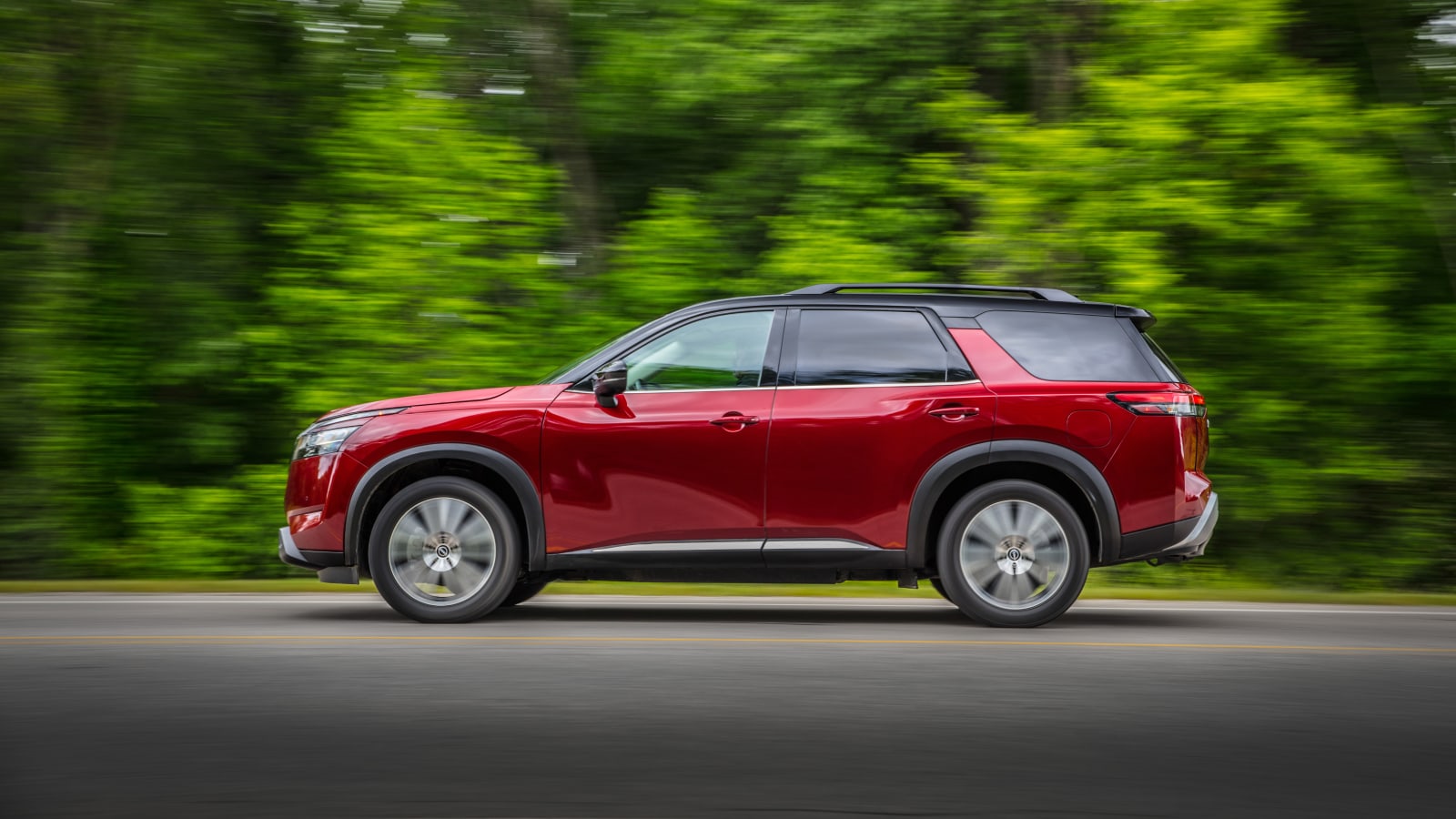
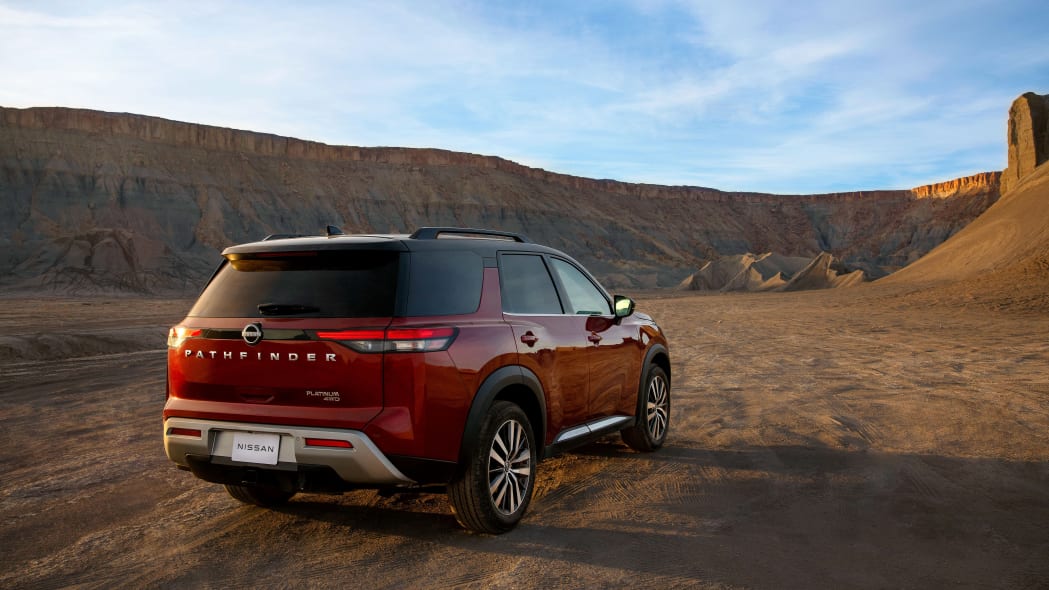
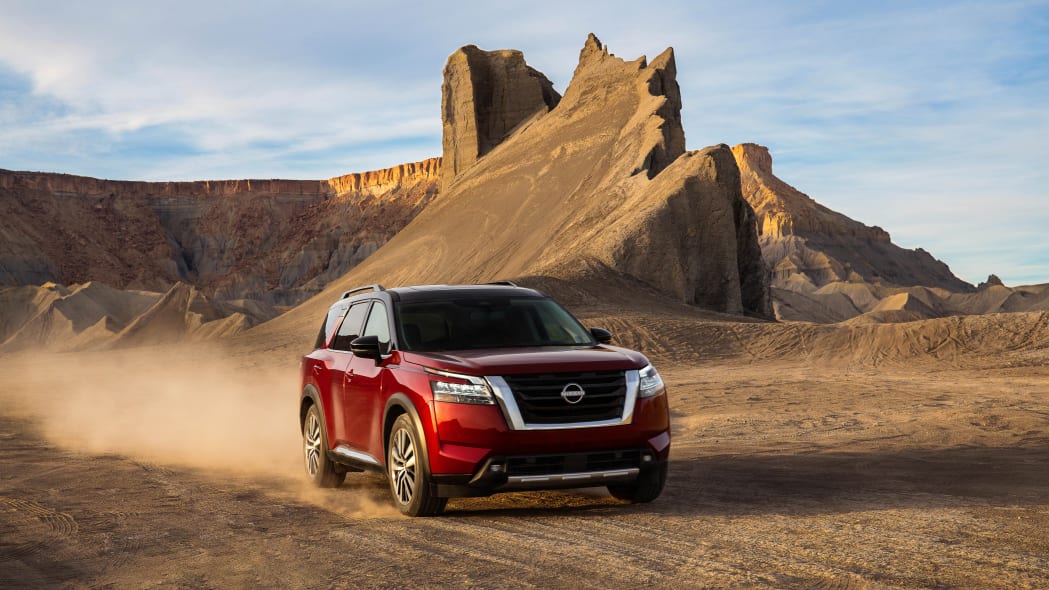
It’s definitely not one of the best automatics available, but it’s still better than a CVT (even if Nissan’s is a good one) and we found it to be perfectly smooth and responsive enough for this sort of duty. It’s also quicker to downshift than the eight-speed auto found in the Hyundai Palisade. As an added bonus, Nissan says it will be much better suited to towing, too, where it’s rated at a healthy-for-the-segment 6,000 pounds when properly equipped.
Nissan’s drive loop took us all over the Detroit suburbs, giving us a taste of just about every routine scenario a crossover driver may encounter. Highways, narrow two-lanes, and broken suburban surface streets were the main course. Through it all, the 2022 Pathfinder remained quiet and composed.
The steering feels appropriately weighted and the nose tracks dutifully straight on the freeway, while the ride is comfortable without feeling completely isolated. Nissan’s revisions to the Pathfinder’s chassis are welcome here. The V6 is punchy enough to keep merges from being scary, and, again, the nine-speed is competent in its role.
On backroads, the Pathfinder feels as big as its spec sheet suggests. Hustling along on rural 45- and 55-mph two-lanes is trivial so long as they’re straight, but once you get into twisting bits, that heft becomes apparent. A Mazda CX-9 this is not, but it never feels obviously tippy, and the chassis is communicative enough that you’re never left wondering what’s happening underneath you. It’s just a lot of car.

Ditching the CVT paid dividends in cabin refinement, but that’s not all Nissan did to make the Pathfinder quieter. There’s a new engine cover, along with improved hood and dash/firewall isolation. Additional sound deadening material was affixed to the carpet backing, and the floor structure has fewer gaps for sound to travel through. There’s also simply more isolation between interior and exterior body components, reducing the number of avenues by which vibration (and thus noise) can enter the cabin. Thicker second-row windows and new laminated acoustic glass for the front windows round out the NVH improvements. Altogether, it won’t match the Buick Enclave for buttoned-down serenity, but it’s a significant improvement over the outgoing Pathfinder.
Interior design and materials were also significantly improved for 2022, and Nissan even threw in a couple of nice-to-have features to give the Pathfinder a bit of an edge in a sea of very similar three-rows. Together, these make for a far more pleasant interior. Among the Pathfinder’s new parlor tricks is a folding mechanism for the second row that allows it to pitch forward enough to allow passengers into the third row while a child seat is installed. This allows more ready access to the rear bench, which itself is roomier. Nissan says the seating position was also adjusted to both improve overall comfort and outward visibility.
This new folding system was incorporated into both the second-row captain’s chairs (which are new) and standard bench seat, so you don’t have to pay extra for it, and it works no matter how many child seats are installed. It locks out if a weight sensor detects more than 25 pounds in the anchored position so it won’t double as a baby sibling ejector seat.
Another handy second-row feature is unique to setups with the captain’s chairs. Between them lies a removable center console that can be lifted away in seconds and is light enough to be held in one hand. It also fits neatly into the underfloor storage space in the rearmost cargo area.
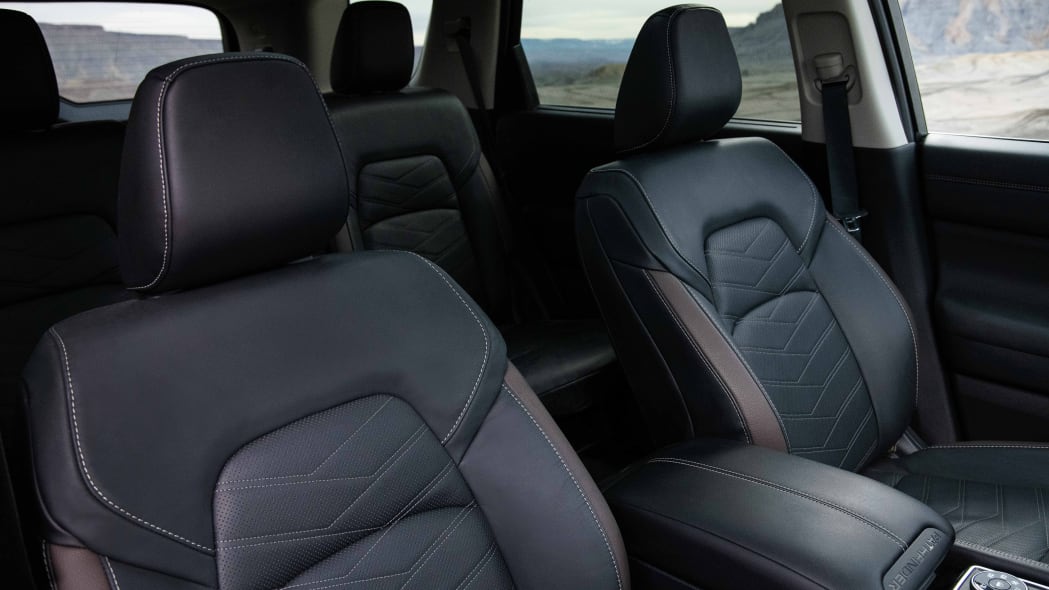
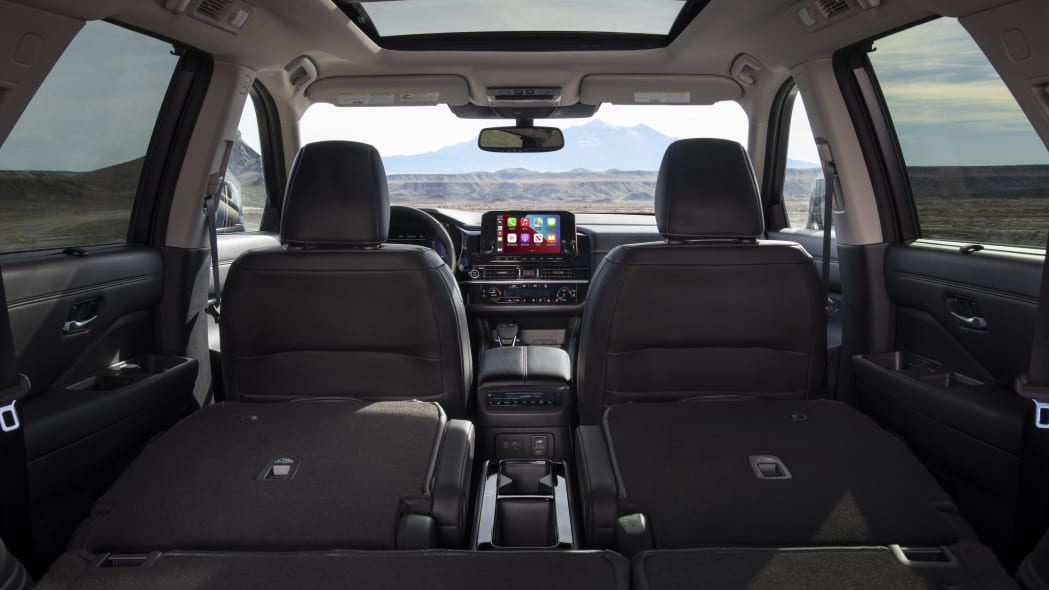
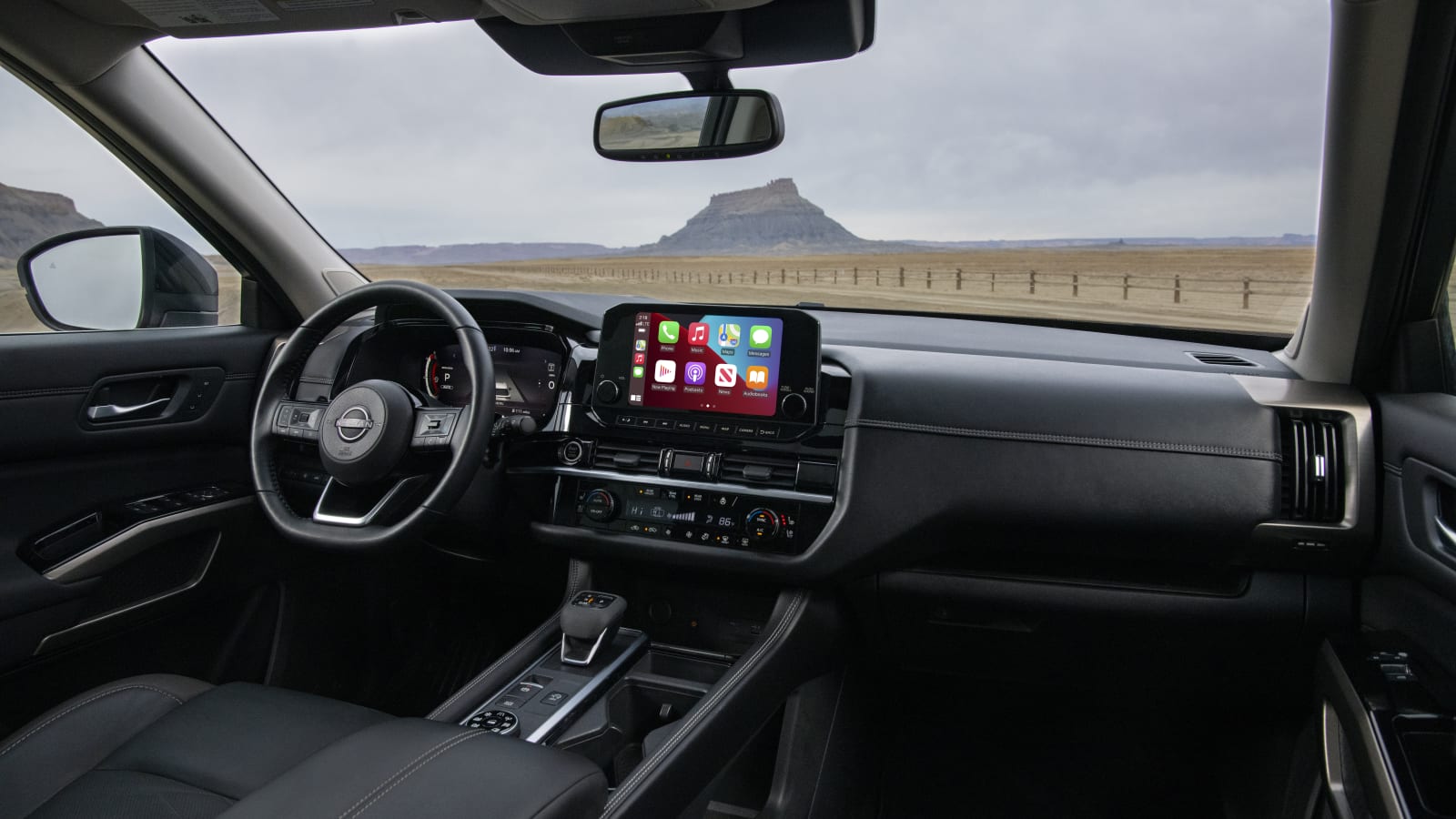
That too benefits from the Pathfinder’s redesign. Thanks to the new car’s boxier rear, it makes good use of the 16.6 cubic feet of space behind the third row. That’s basically the same as a Honda Pilot, and according to Nissan’s demonstration at least, is roomy enough for four golf bags (laid horizontally), a 120-quart cooler (with room to spare) or six carry-on suitcases.
With the two rearmost rows folded, cargo space expands to 80.5 cubes. The Pathfinder can accommodate a standard piece of 4×8 plywood laid flat in the cargo area, though it’s a little more than a foot shy of being able to do so with the tailgate closed. Bring tie-downs.
There’s also a new infotainment system Nissan has been rolling out across its lineup. It includes support for both Android Auto and Apple CarPlay – both wired and wireless, in Apple’s case – and based on our time behind the wheel, it all works well. We had the opportunity to try out both wired suites and found the integration to be seamless and intuitive. It gets the job done, but ultimately the screen itself is a bit of a letdown, with resolution and general image quality that’s lower than we’re used to from some of Nissan’s competitors. Specifically, the Hyundai Palisade and Kia Telluride.
As for the entire 2022 Nissan Pathfinder, it too falls short of the bar set by those top-rated three-row crossover siblings. That’s an awfully high bar, though, and the new Pathfinder at least comes far closer to it. To garner more interest, however, Nissan could consider a more aggressive pricing strategy. Though a decent value, its prices line up almost perfectly with the likes of the Hyundai Palisade or Honda Pilot, and just slightly undercuts the Toyota Highlander at most trim levels. The base Pathfinder S model starts at $34,560 (including $1,150 for destination). The popular SV and SL grades start at $37,350 and $40,740, respectively. The range-topping Platinum will set you back $49,240, and it’s basically loaded at that price. AWD will set you back $1,900 across the board.
So a home run it is not, but like the Rogue, the Pathfinder had become so long in the tooth that it was virtually impossible for Nissan to build a replacement that didn’t surpass it in every category. Even in this nowhere-to-go-but-up situation, the 2022 Pathfinder does in fact achieve that goal by a significant margin.

